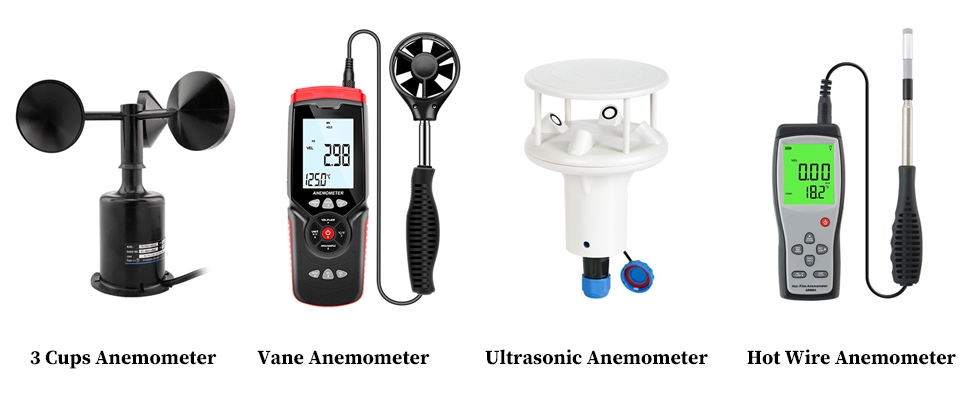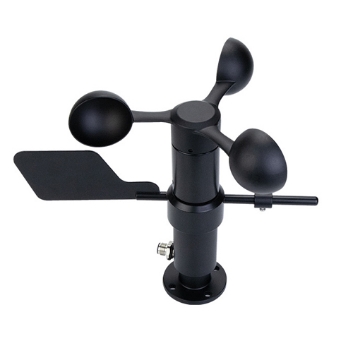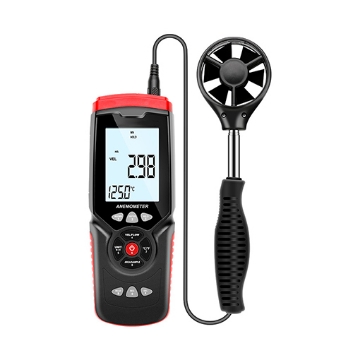Anemometer
3 Cups Anemometer and Wind Vane, Wind Speed and Direction Meter
Aluminum 3 Cups Anemometer, Mechanical Wind Speed Meter
Handheld Vane Anemometer, Digital Wind Speed Meter
Hot Wire Anemometer, 0.1~25 m/s, Thermal Wind Speed Meter
Hot Wire Anemometer, 0~30 m/s, Thermal Wind Speed Meter
Intergrated Handheld Vane Anemometer, Digital Wind Speed Meter
Polycarbon 3 Cups Anemometer, Mechanical Wind Speed Meter
Stainless Ultrasonic Anemometer, Digital Wind Speed and Direction Meter
Ultrasonic Anemometer, Digital Wind Speed and Direction Meter
Wind Vane, Mechanical Wind Direction Meter
What is an anemometer?
An anemometer is a precision device engineered for the measurement of wind speed and direction, which is crucial for various applications including meteorology, environmental monitoring, and industrial processes.
Types of Anemometers
Mechanical anemometer relies on physical movement, such as rotation or oscillation, to measure wind speed. They typically do not depend on electronic sensors or circuits for direct measurement but infer wind speed through the movement of mechanical components.
- 3 Cups Anemometer: This type operates on the principle of rotation. It consists of three hemispherical cups mounted on a horizontal shaft. As the wind blows, the cups rotate, and the speed of rotation is proportional to the wind speed. The number of rotations per unit time is then converted to wind speed.
Digital anemometer uses electronic sensors to measure wind speed. These sensors, which can be thermistors, ultrasonic sensors, or electromagnetic sensors, convert wind speed into electrical signals, which are then processed by internal electronic circuits to display the wind speed.
- Vane Anemometer: This instrument measures wind direction by means of a freely rotating vane that aligns with the wind. Combined with a sensor that detects the vane’s position, it provides accurate wind direction data. For wind speed measurement, it often incorporates a cup or propeller system similar to the 3 cups anemometer.
- Ultrasonic Anemometer: This advanced device measures wind speed and direction using the Doppler effect. It emits ultrasonic sound waves and measures the change in frequency or phase shift as the wind moves across the path of the sound waves. These changes are then translated into wind speed and direction.
- Hot Wire Anemometer: This type works on the principle of heat transfer. A thin wire is heated by an electric current, and as the wind flows past the wire, it cools down. The rate of heat loss from the wire is proportional to the wind speed. By measuring the electrical resistance of the wire, which changes with temperature, the wind speed can be determined.

Digital Anemometer VS. Mechanical Anemometer
Mechanical Anemometer:
- Accuracy: May be less accurate than digital anemometers due to potential mechanical wear and the need for manual reading of dials or gauges.
- Ease of Use: May require more skill to use properly, especially when interpreting the readings from analog dials.
- Durability: Can be more rugged in design, with fewer electronic components to fail.
- Cost: Often less expensive than digital anemometers, particularly for simpler models.
Digital Anemometer:
- Accuracy: Typically more accurate than mechanical anemometers due to electronic sensors and digital displays.
- Ease of Use: Usually easier to read and operate, often with a simple digital display and sometimes with additional features like data logging, averaging, and maximum/minimum wind speed recording.
- Durability: Can be more fragile due to electronic components but is often well-protected in a sturdy casing.
- Cost: Can be more expensive than mechanical anemometers, especially if it includes advanced features.











